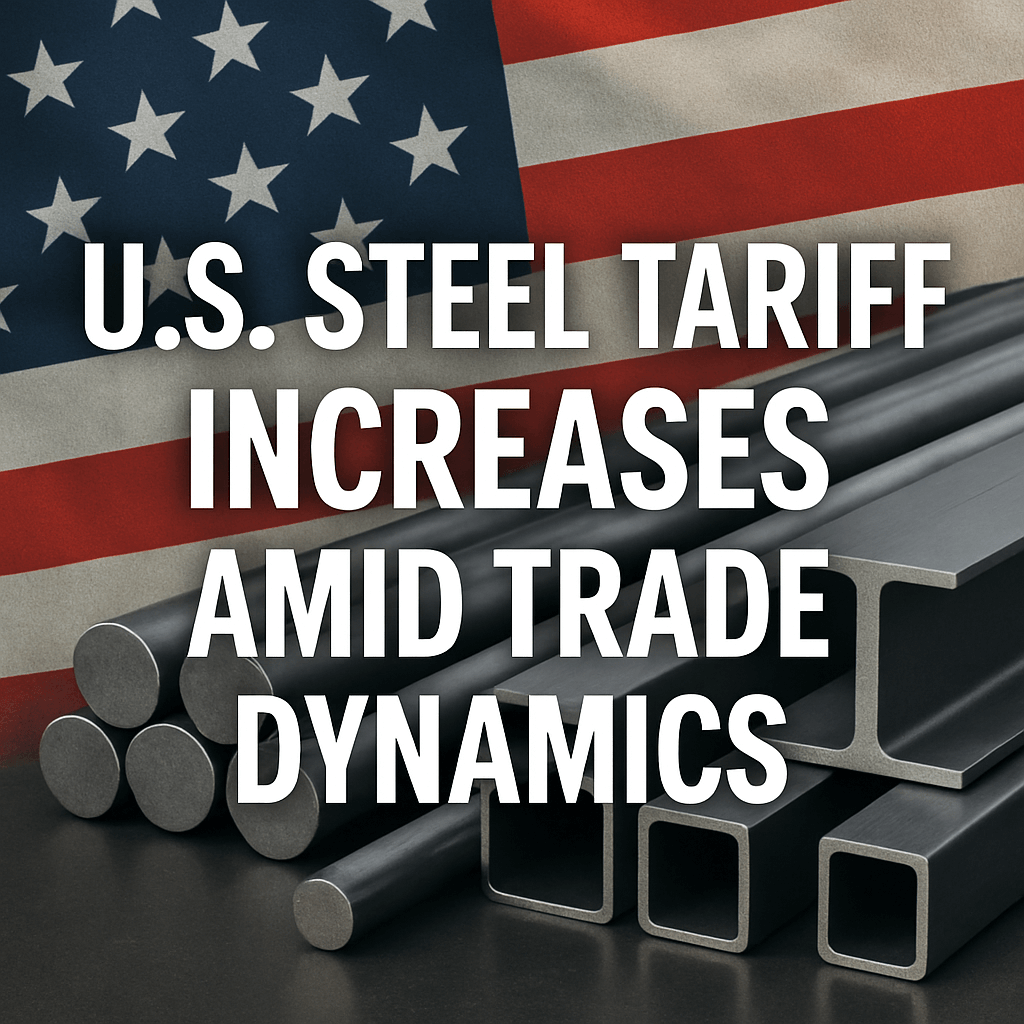U.S. Steel Tariff Increases Amid Trade Dynamics

In a significant announcement during a rally in Pennsylvania, former President Donald Trump declared his intention to double tariffs on imported steel to 50%. This decision, made in the context of a fluctuating global trade landscape, has the potential to exacerbate existing tensions in the ongoing trade war with major global economies, including the European Union (EU) and China.
Details of the Tariff Increases
At the event held on May 30, Trump emphasized that this move is aimed at “further strengthening the steel industry in the United States.” Alongside steel tariffs, he also announced an increase in aluminum duties from 25% to 50%, with both hikes set to take effect on June 4, 2025.
The timing of this announcement is critical as it follows a series of conflicting rulings by the judiciary regarding Trump’s customs policy. Initially, the U.S. Court of International Trade blocked the tariff increase, only for a federal appeals court to later permit it pending further decisions.
Implications for the Global Trade Environment
The impact of the proposed tariffs extends beyond the U.S. borders. Countries affected most by these tariffs include Canada, the EU, and Brazil, all of whom have established significant trade relationships with the U.S. The EU recently managed to postpone an increase in general duties, highlighting the precariousness of transatlantic trade relations.
Candace Laing, president of the Canadian Chamber of Commerce, remarked, “Dismantling efficient, competitive, and reliable cross-border supply chains in steel and aluminum comes at a high cost to both countries.” This sentiment reflects a growing concern among trade experts about the long-term impact of protectionist measures.
Recent Developments in U.S. Steel
Trump’s comments at the rally also included updates on an impending investment deal involving Japan’s Nippon Steel, which is looking to invest significantly in the Mon Valley Works-Irvin plant. Although Trump initially expressed skepticism towards the Japanese firm, he indicated a shift in stance, noting that he had not yet seen the final agreement but recognized the substantial commitment Nippon Steel was willing to make.
The Japanese company originally sought to fully acquire U.S. Steel for approximately $14.9 billion but subsequently adjusted its proposal to focus on partial ownership while increasing investments in American facilities without layoffs.
Price Dynamics and Industry Impact
According to the U.S. Department of Commerce, steel prices have surged 16% since January 2025, currently at $984 per metric ton in the U.S., compared to $690 in Europe and $392 in China. These price discrepancies may significantly affect the competitive landscape and influence global supply chains.
Despite the domestic price increase, the U.S. steel production levels remain robust, with three times as much steel produced in 2024 compared to imports. Major sources of imports include Canada, Brazil, Mexico, and South Korea, all of which could feel the ramifications of the new tariffs.
Political Ramifications Ahead of Midterm Elections
The fate of U.S. Steel, a historically significant player in the global steel market, may have implications for the upcoming midterm elections, particularly in manufacturing-centric states like Pennsylvania. The Republican Party could leverage Trump’s policies on tariffs and domestic steel production to galvanize support among constituents directly impacted by the steel industry.
“We are here today to celebrate an extraordinary deal that will ensure that this historic American company will remain an American company,” Trump stated, reflecting the nationalism that permeates his trade policies.
Expert Opinions
Market analysts have mixed opinions regarding the effectiveness of heightened tariffs. Some believe that these measures will bolster domestic production; however, others caution that such tariffs could provoke retaliatory actions from international trading partners, potentially destabilizing the global economy.
In conclusion, the doubling of tariffs on steel and aluminum will not only reshape domestic production strategies but also influence international relationships and market dynamics significantly. Stakeholders from various sectors must closely monitor these developments as they unfold.
Source: euronews